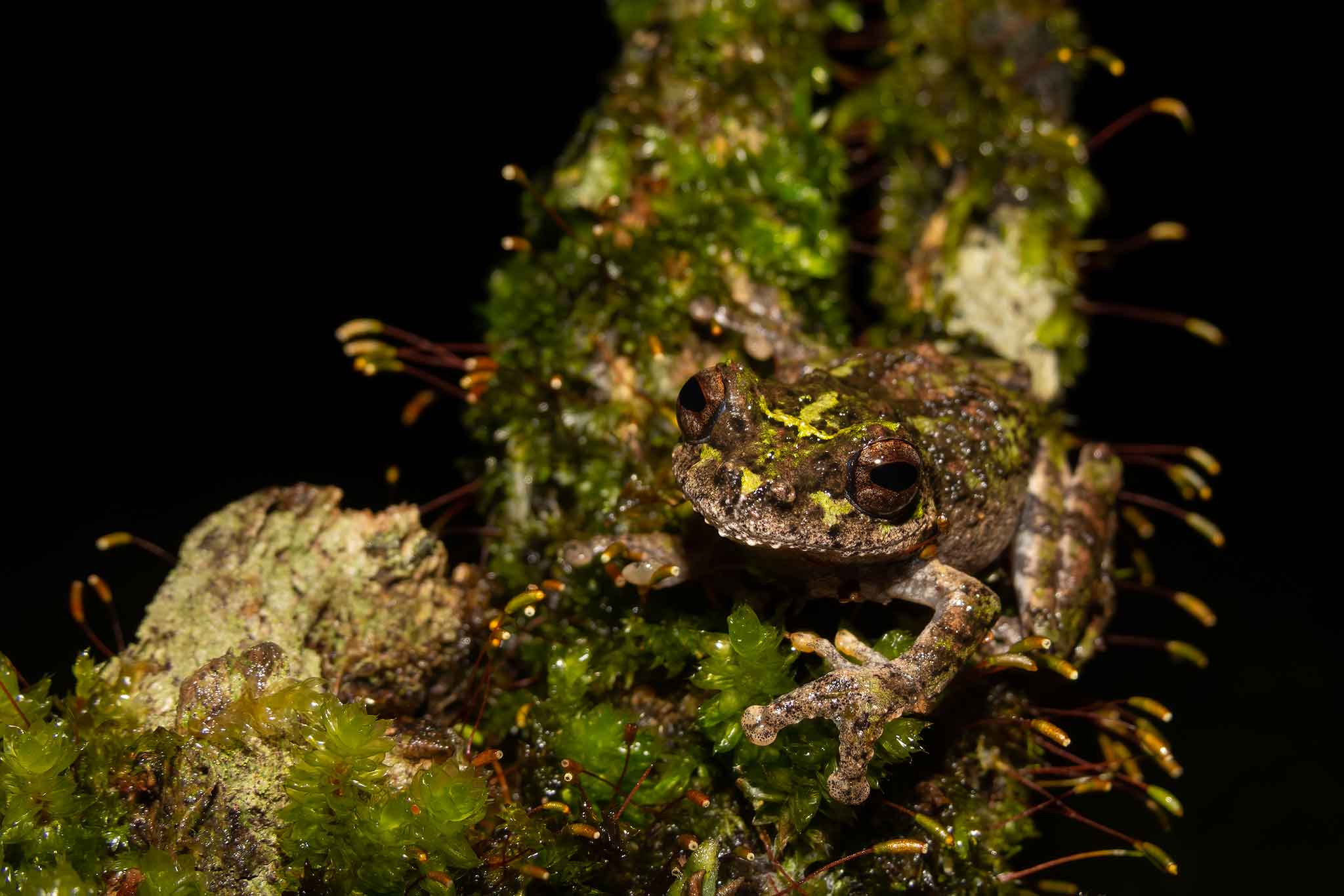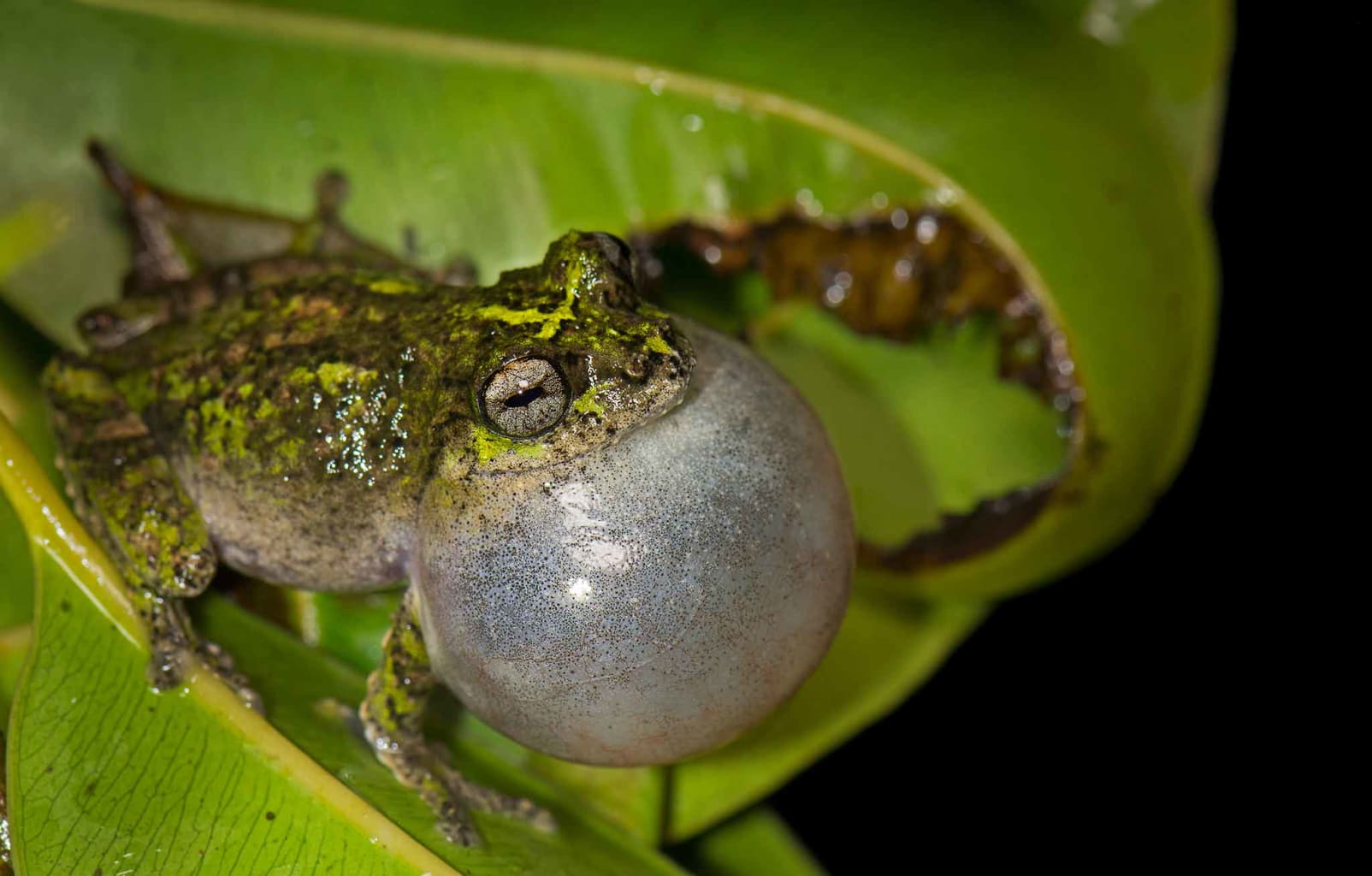 Listen to this article
•
15:34 min
Listen to this article
•
15:34 min
Visit the Western Ghats in the monsoon to witness the wealth of frogs that dot every layer of the forest, from the floor to the highs of the canopy. This is the time when the forest comes alive and pulsates with herp life. A natural choir accompanies you at every step, with the high notes of different insects and an assortment of sound effects added by myriad frog calls. There really isn’t a better place than the rainforests of the Western Ghats to explore, photograph, and experience the gregarious southwest monsoons of India. The Western Ghats are characterised by high biological diversity and endemism. Unsurprisingly, UNESCO’s World Heritage Committee has inscribed the Western Ghats as one of the world’s “hottest hotspots” of biological diversity.
The spike in herp activity makes the monsoon our favourite time of year. Clad in rubber boots and raingear, we spend hours walking on mist-laden trails, cutting through forests, and crossing ephemeral streams that seem to be rushing to get somewhere. The canopy in these forests is so thick that sometimes even during the day, a torch comes in handy, especially when looking out for the world of the little maestros — frogs.

Cover: The rare water drop frog is found only high in the canopy of trees in India’s Western Ghats.
Monsoon is the season of love, and the calls and sounds that animals make, play an essential role in the courtship and mating rituals of various species. During the day, it’s the symphony of cicadas and birds, at night-time, there is a surge in activity and a change in the sounds that engulf the forest. Most frogs are active at night, advertising their readiness to woo a prospective mate or declare their superiority to other competitors, and events usually transpire in the dark over a loud call. Frogs produce a variety of sounds and calls through their vocal sacs — the sound-resonating throat pouch present only in male frogs and toads. Calls vary, from the shrill “tik-tik-tik” of shrub frogs to the heavy bass calls of Malabar gliding frogs, while the audacious semi-aquatic golden frogs sound like you’re standing in a working printing press. But there is one specific frog call that breaks the usual rhythm and makes us look high up in the trees in the hope that we will locate the source of the high-pitched call. This call, which sounds exactly like a drop of water falling every 3-4 seconds, is from the rightly named water drop frog (Raorchestes nerostagona). This rare species was first described by S D Biju and Franky Bossuyt (2005). The name nerostagona is derived from two Greek words: nero, water, and stagona, drop, due to the sound it makes.
Frogs are broadly classified based on their preferred habitat: terrestrial/burrowing frogs, semi-aquatic, aquatic, and arboreal. The water drop frog is an arboreal frog from the fascinating family of Old World tree frogs (Rhacophoridae), which includes the shrub frog genus (Raorchestes). These frogs are known to dwell in the high canopy, around 30-65 feet above ground. It’s hard to imagine how certain frog species spend their entire lives on tall moss and lichen-laden trees. Besides, this species has brilliant camouflage and is also capable of metachrosis (the ability to change/alter colour appearance). Spending an entire life amidst lichen, it harmonises with its environment. Notice the webbing between the toes and the fingers, and the fringe of skin along the outer edge of its fore and hind limbs, which make it very lichen-like and help the creature blend in perfectly.
Given that their permanent residence is so far from the ground, it is extremely difficult to encounter a water drop frog. We remember being all ears for the loud cracking sound of falling trees during each visit to the Western Ghats — hoping we’d accidentally come across a water drop frog. But sadly, none of the falling trees bore any frog for us. However, one rainy night, all the cloud-covered stars turned in our favour. While herping in the forests of Agumbe in Karnataka, we heard a water drop frog call incessantly from a somewhat secluded tree that was only about 20-25 feet in height. We narrowed down the frog’s location and spotted its vocal sac. After all these years of just hearing the calls, seeing it for the first time brought in a wave of celebration. Vipul, who has tree climbing experience, both from his naughty childhood days and his professional tree climbing days, decided to climb the tree. Balancing on a high branch with torch and camera, the gushing wind and lashing rains added great difficulty, but we finally managed to be the first to film this frog calling. Hopefully, the male got lucky that night.
Interestingly, a female water drop frog deposits clutches of about 40 direct-developing eggs high in the rainforest canopy. As per an article published by SD Biju and Franky Bossuyt in Current Science in 2005, a clutch of eggs was found in a hole about 10 cm deep, 10 m high up in a tree in Kalpatta, Kerala. These eggs were white (non-pigmented) and protected by a dense layer of jelly, with each egg measuring approx. 4.5 mm in diameter.

Developing in the canopy, these frogs skip the free-swimming tadpole stage and appear as fully developed little frogs straight from the eggs. We can only imagine the level of camouflage their mini forms possess to escape predation. What is their survival ratio, and how many reach adulthood? What does their diet mainly consist of? We have so many questions that can only be answered by scientific research and study. It’s ironic that the more we learn about different species, the more we realise that there’s so little that we do know about them.
India has about 472 species of amphibians, and about 50 per cent of them are endemic (not found anywhere else). Newer frogs are being discovered in the Western Ghats even today. In March 2021, 5 new species were added to the Raorchestes genus after a long, comprehensive study over 10 years. On the other hand, the decline in amphibian populations, part of the ongoing worldwide mass extinction of amphibian species, is also underway. Arboreal frog species in India, like the water drop frog, are under grave threat, mainly due to the destruction of their habitat. The cultivation of eucalyptus, coffee, and tea plantations, combined with deforestation, damaging agricultural practices, and unsustainable tourism, adds to the problem of habitat loss. Nature is declining globally at an unprecedented pace. With little information on the extent of occurrence of various species, their status and ecological requirements, we hope we do not run out of time in this race against species extinction and rising environmental challenges.







